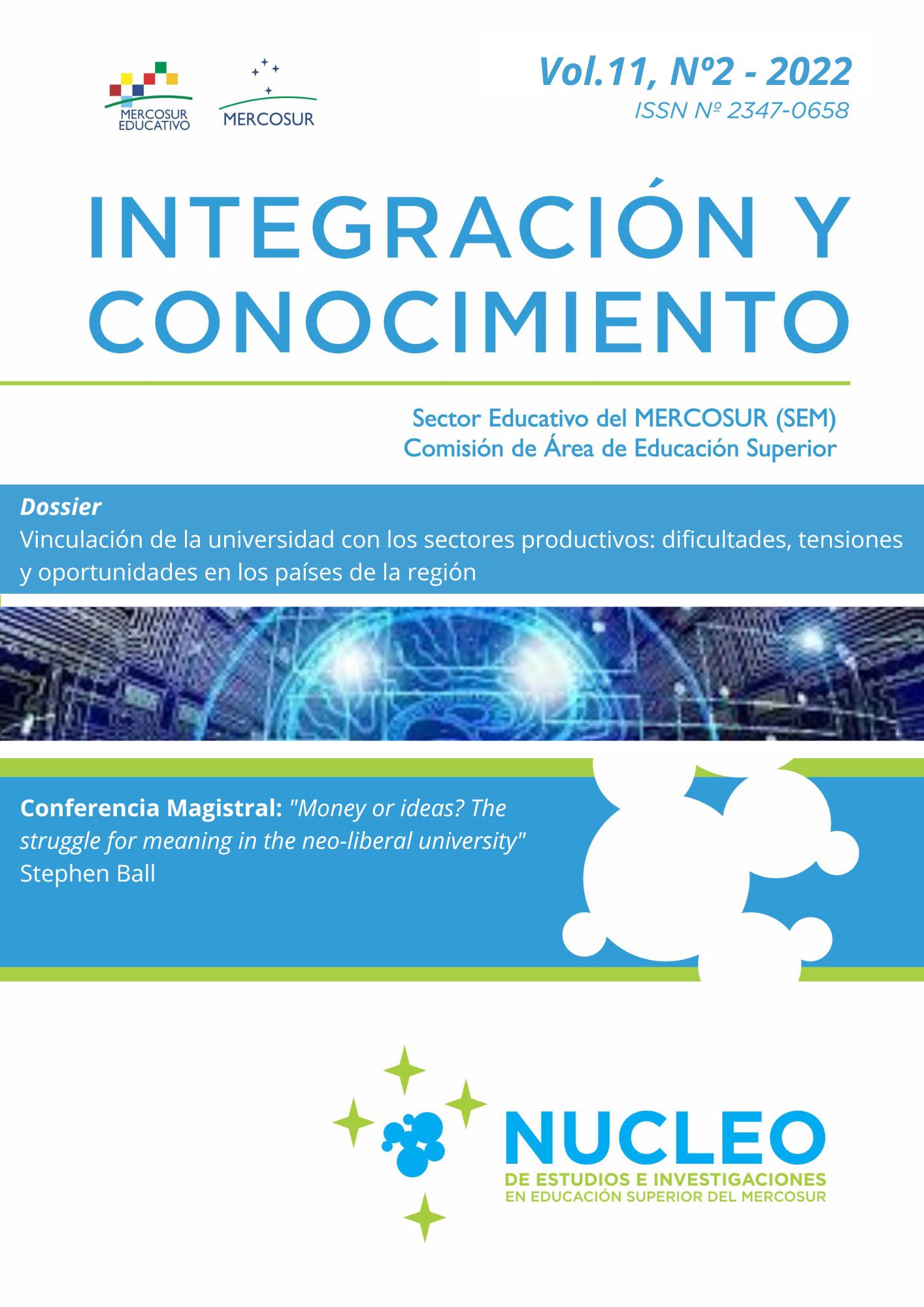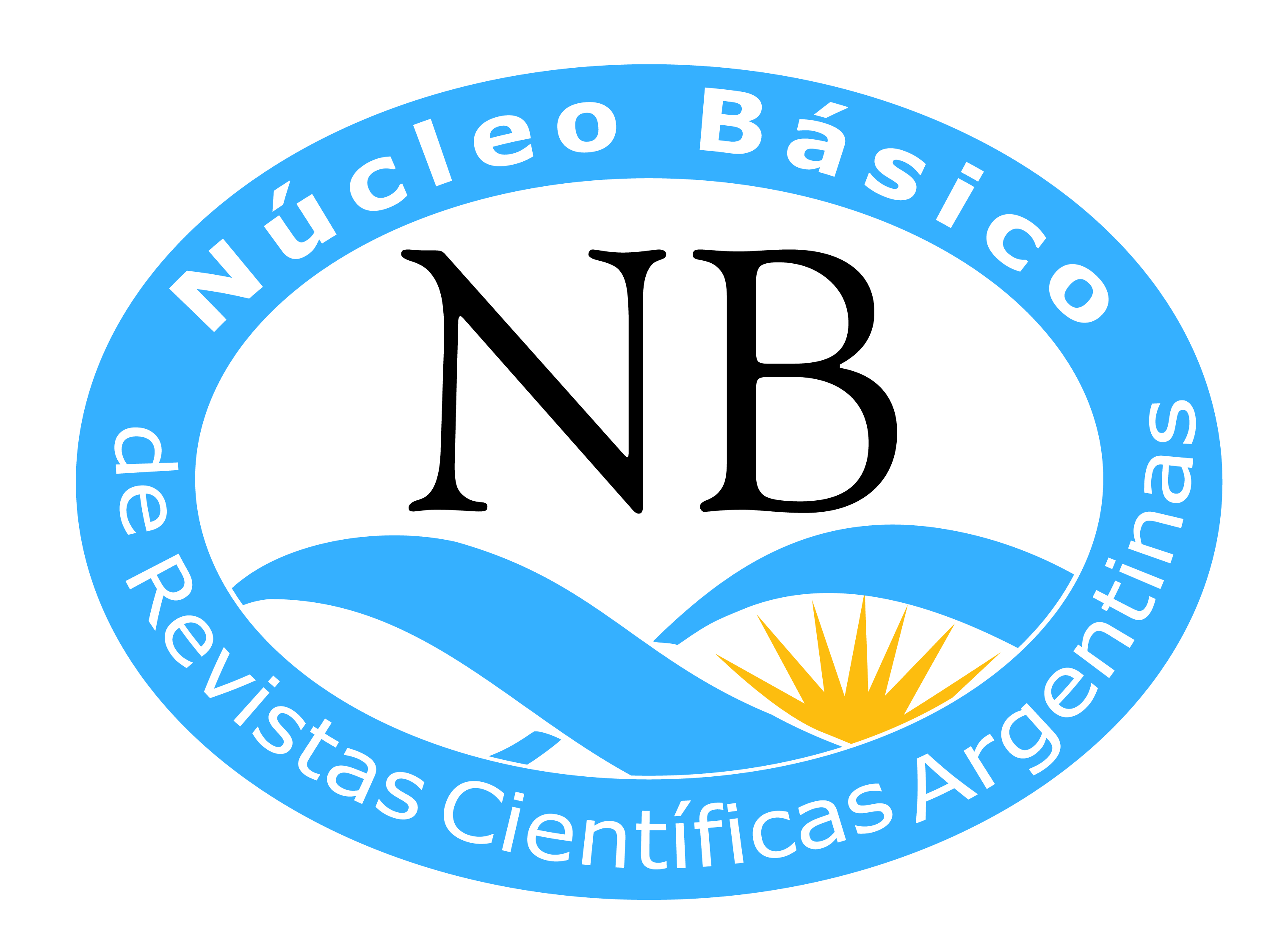The technological vector in public universities in Argentina: local responses to global challenges
DOI:
https://doi.org/10.61203/2347-0658.v11.n2.38437Keywords:
University-Technology Transfer-Public Policies -State- SocietyAbstract
Several socio-productive transformations of a global order affect the incorporation of a technological agenda for universities. Through the analysis of qualitative-quantitative primary and secondary sources, the article studies how national universities implemented technological innovation policies. Part of an organizational approach applied to case studies. To identify the process of change, qualitative-quantitative R&D indicators were constructed and a descriptive analysis was applied. The article contributes to the understanding of university exchange rates in full state-public subsidy schemes
Downloads
References
Brunner, J. J. (2008). El proceso de Bolonia en el horizonte latinoamericano: límites y posibilidades. Revista de Educación, número extraordinario, 119-145.
Brunner, J. J. (2012). La idea de universidad en tiempos de masificación. Revista Iberoamericana de Educación Superior (RIES), III (7), 131-144.
Clark, B. (1983). The higher education system. Academic organization in cross-national perspective. Berkeley, CA:University of California Press.
Clark, B. (2004). Sustaining change in universities: Continuities in case studies and concepts. Maidenhead, UK The Open University Press-McGraw-Hill.
Davis, G. F. & Powell, W. W. (1992). Organization-environment relations. En M. D. Dunnette y L.M. Hough (Eds.), Handbook of industrial and organizational psychology (pp. 315-326). Palo Alto, CA: Consulting Psychologists.
DiGaetano, A. & Strom, E. (2003). Comparative Urban Governance: An Integrated Approach. Urban Affaires Review, (26), 38-356.
DiMaggio, P. J., & Powell, W. W. (1991). The iron cage revisited: Institutional isomorphism and collective rationality in organization fields. En W. W. Powel y P. J. DiMaggio (Eds.), The new institutionalism in organizational analysis (pp. 63-82). Chicago, IL: University of Chicago Press.
Fligstein, N. (2001). Organizations: Theoretical debates and the scope of organizational theory. En C. Calhoun, C. Rojek, y B. Turner (Eds.), The sage handbook of sociology. London, UK: Sage.
García de Fanelli, A. (2005). Universidad, organización e incentivos. Desafío de la política de financiamiento frente a la complejidad institucional. Buenos Aires, Argentina: Miño y Dávila-Fundación OSDE.
Kezar, A. (2011). Organizational culture and its impact on partnering between community agencies and postsecondary institutions to help low-income students attend college. Education and Urban Society, 43(2), 205-243.
Levy, D. (1986). Higher education and the state in Latin America: Private challenges to public dominance. Chicago, EEUU: University of Chicago Press.
Mazzucato, M. (2016). El Estado emprendedor. Mitos del sector público frente al privado, Barcelona, España: RBA.
Ministerio de Ciencia, Tecnología en Innovación Productiva (2015). Estadísticas universitarias, Buenos Aires: Argentina.
Ministerio de Educación (2017). Anuario 2017 de Estadísticas Universitarias, Buenos Aires: Argentina.
Milgrom, P., & Roberts, J. (1992). Economics, organization and management. NJ, EEUU: Prentice-Hall, Englewood Cliffs.
Mintzberg, H. (2005). La estructura de las organizaciones. Barcelona, España: Ariel Economía.
Neave, G. & van Vught, F. (Eds.) (1994). Prometeo encadenado. Estado y educación superior en Europa. Barcelona, España: Gedisa.
Presidencia de la Nación Argentina (2007). Decreto 310/07, Buenos Aires: Argentina.
Scott, R. (1992). Organizations: Rational, natural and open systems. Englewood Cliffs, NJ, EEUU: Prentice Hall.
Scott, W. R., & Meyer, J. W. (1983). The organization of societal sectors. En J. W. Meyer y W. R. Scott (Eds.), Organizational environments: Ritual and rationality (pp. 129-153). California, EEUU: Sage.
Sporn, B. (1999). Adaptive university structures: An analysis of adaptation to socioeconomic environments of U.S. and European universities, London, England: Jessica Kingsley.
Swyngedouw, E. (2005). Governance Innovation and the Citizen: The Janus Face of Governance-beyond-the-State, Urban Studies, 42 (11), 1991–2006.
Thompson, J. D. (1967). Organizations in action, New York, EEUU: McGraw-Hill.
Weick, K. E. (1991). Educational organizations as loosely coupled systems. En R. Birnbaum (Ed.), Organization and governance in higher education: An ASHE reader series (pp.103-117). Lexington, MA: Ginn Custom Publishing.
Downloads
Published
Issue
Section
License

This work is licensed under a Creative Commons Attribution-NonCommercial-ShareAlike 4.0 International License.
Authors who have publications with this journal accept the following terms:
a. Authors shall retain their copyright and guarantee the journal the right of first publication of their work, which shall simultaneously be subject to the Creative Commons License of Recognition which allows third parties to share the work as long as its author is indicated and its first publication is this journal.
b. Authors may adopt other non-exclusive licensing agreements for the distribution of the published version of the work (e.g., depositing it in an institutional telematic archive or publishing it in a monographic volume) provided that the initial publication in this journal is indicated.
c. Authors are allowed and encouraged to disseminate their work via the Internet (e.g. in institutional telematic archives or on their website) after publication of the article, which may lead to interesting exchanges and increased citations of the published work. (See The Effect of Open Access).



